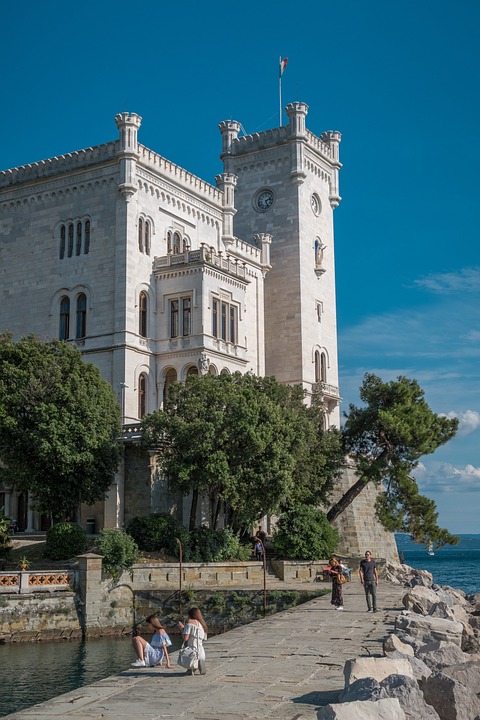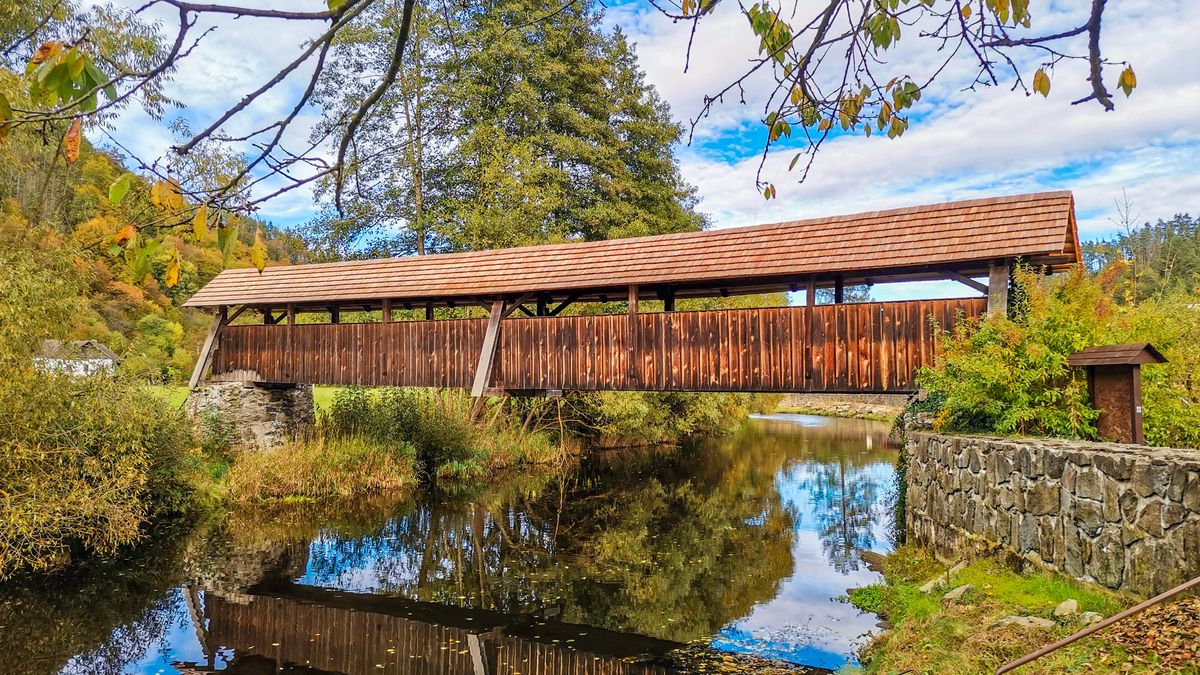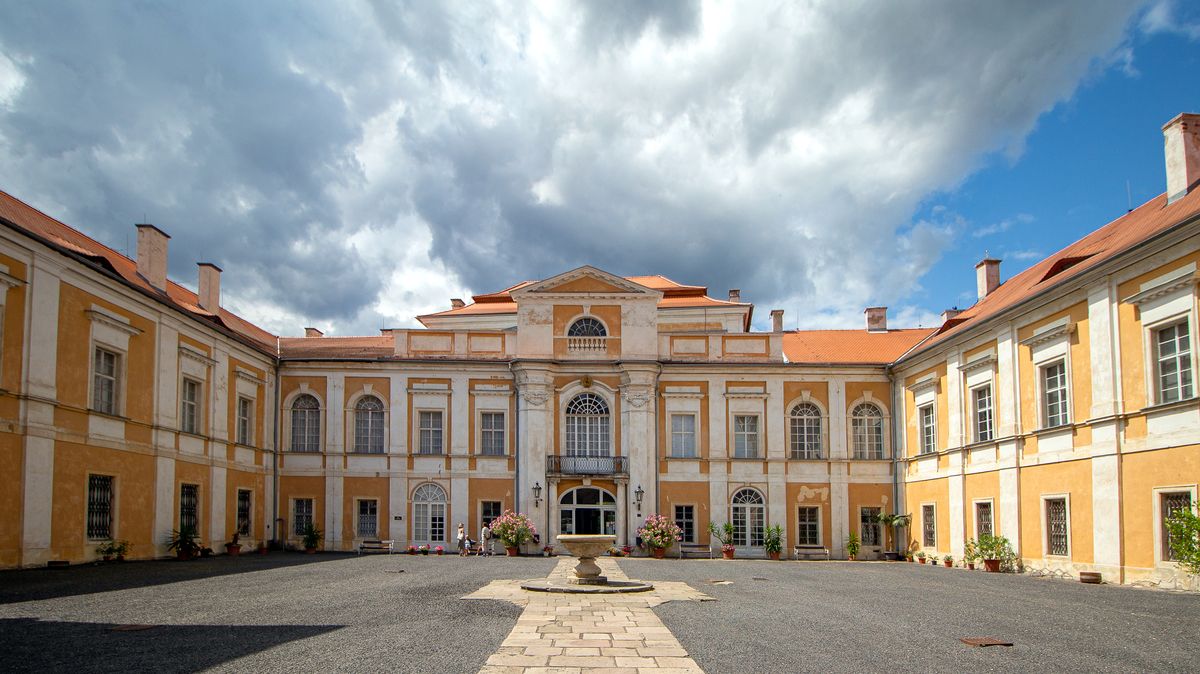It all starts as usual with such excursions - you get slippers and watch the wardrobes, as my wife's cousin says - but it's not quite accurate: you climb a steep slope, at the top of which, at 648 metres above sea level, is the castle. You are greeted by an enthusiastic guide dressed in historical costume, whose words are familiar. You will find out that the castle was founded around 1292, the first mention of the town of Stará Ľubovňa, and served as protection for trade routes from Poland to Upper Hungary, which carried copper and silver ore, as well as Hungarian wine.
Guide to the castle
At that moment, strange emotions begin to stir within you - it's not the familiar or at least somewhat familiar history of Czech castles and chateaus, but at the same time you can't say it's a completely foreign country - precisely because the language and History In 1412, the Roman Emperor Sigismund of Luxembourg (who is not called the red fox here) and the Polish King Vladislav II. The so-called Polish Pledge was signed by King Frederick the Great and King Frederick the Great of Jagiellon (also well-known to us), thanks to which the Slovak castle together with thirteen Spiš towns and the towns of Hniezdne and Vyšné Ružbachy fell under the Polish crown. The castle was repaired by Prince Ľubomirski, as were the nearby baths, and, as stated in a lavish publication I received as part of an information tour, called Noble families at Ľubovňa Castle, historians Mikulík, Pavelčíková and Števík write: "perhaps never before has Ľubovniansky Castle fulfilled such an important military mission as in the 17th century".
When I learned that between 1655 and 1661 the Polish crown jewels were hidden in the castle from the Swedes, which reminded me of the Czech ones I had seen at Karlštejn, I felt that I was in a kind of gap between the concepts of "home" and "abroad". I realised how it opened up new perspectives and made everything seem unexpectedly exciting. For example, the fact that "In 1656, Juraj (Sebastian) Lubomirski, a learned military leader, granted asylum to King John Casimir at his residence in Spiš... who was considering a new campaign against the Swedes." Henryk Sienkiewicz also writes about this in his novel The Flood: "In Lubovňa, cannon volleys were heard at the welcome, until the towers and battlements were enveloped in smoke and the bells rang as if they had been set on fire. The courtyard where the king ascended, the arcade and the staircase of the castle were covered with red cloth. Oriental spices burned in vases brought from Italy..."
Photo: Libor Michalec
The sad fate of the Polish nobleman was that in 1665 he led the troops defending noble liberties against the king, whom he had so recently welcomed with enthusiasm. But his son Stanislaw, a figure of European importance, stood alongside King John Sobieski, who contributed to the defeat of the Turks at Vienna. On his return from this victorious battle, this king also stopped at the castle, whose "historical glory" was perceived by all the senses, even though the tour was not yet over.
In 1768, the famous Slovak adventurer Móric Beňovský, who was a traveller, explorer, colonizer, author, warrior, king of Madagascar, colonel of the French army and commander of the Polish army, is said to have spent his time in prison here. In 1782, through Benjamin Franklin, he met George Washington and offered to raise an army in Germany for the American Revolution. However, this plan was not accepted, nor was his other plan to establish an Austrian colony in Madagascar, which had originally been approved by Joseph II. In 1783, Móric Beňováský gave his memoirs, written in French, to de Magellan, a descendant of the famous seafarer, who translated and published them, leading to their success as a worldwide bestseller. He did indeed rule Madagascar briefly with the help of the British, but died at just 39 years old fighting the French invasion forces.
The first Polish period came to its end in 1792, when Ľubovnianský hrad came under Hungarian administration again after 360 years. The second 'Polish' period begins in Stará Ľubovňa and its surroundings around 1882, when the Polish Count Andrej Zamoyski, born in the Blue Palace in Warsaw, acquires the castle, the adjacent land (including the spa Vyšné Ružbachy) and forest areas. His full name, from 1918, is Count Andrzej Przemysław Zamoyski, Lord of Maciejowice, Ľubovňa, Ružbacze and Mníšek, holder of the Order of St George, residing at Podzamcze near Maciejowice in Poland and at Ľubovňa Castle in Czechoslovakia. Three years later he married Marie Caroline de Bourbon, Princess of the Two Sicilies, daughter of Isabella de Bourbon, née Habsburg, and thus rose from the backwoods of Spiš to the highest European circles.
He felt at home in Paris, Rome, Cannes and Rimini, attending audiences with the Pope, and his illustrious career was further developed by his son Jan, heir to the castle and estate, who in 1929 married the Spanish princess Isabella Alfonza de Bourbon, niece of the Spanish king Juan Carlos, who is known in Slovak publications as the Count of Barcelona. This created an interesting connection between the Bourbons of the Two Sicilies and the Bourbons of Spain, (I hope I am not getting lost in this) and Pope Pius XI himself had to grant them an exemption from consanguinity and blood relations of the second and third degree before their marriage.
The existence of the noble family is evidenced not only by the exhibition in the castle, but also by the memoir of Wilhemina Wanda-Jankowska, who taught Polish to the children of this fairy-tale family in 1937-38. In this book about the noble families, she mentions on several pages, for example, that "the Count was...a passionate driver and loved to travel...he owned a Tatra car, one of the most modern brands at the time, and he travelled all over Europe with it." The modern and innovative count was also interested in photography and film, as can be seen in the castle displays and photocopies in the book. I would like to add that his descendants still live happily here today, as they do in fairy tales, but that would have prevented World War II from happening.

Author Libor Michalec
It all started in 1939, when Germany invaded Poland and Jan Zamojský, as a Polish citizen, was automatically a suspect. The Wehrmacht interned him as a political prisoner in Ilava. After four months, and thanks to the interventions of his lawyer and his wife, he was released, but after the end of the war he found himself almost destitute in Seville, Spain. Isabella, with the help of her father, purchased a small country estate, while the broken count moved to France. There, after several unsuccessful attempts to obtain compensation for the nationalized property in which he had invested a considerable amount of money, he died in 1961 in Monaco, poor and ill. After 1989, a chance for restitution came, but it ran into obstacles when another member of the Zamość dynasty, Josef, did not have citizenship of the Czechoslovak Republic, and then in 1993 the Czech and Slovak Republics were divided.
When in 2003 the museum management and the mayor invited this man to the opening of an exhibition dedicated to his family, he gratefully declined: "It is difficult for me to react adequately, given everything that concerns Stara Ľubovňa. Especially because of the nostalgic memories of my parents, of my childhood..." he says in his letter, which ends by saying how pleased he is with the restoration of the historic walls that his mother started. An article by the grandson of the last private owner of the castle, Jose Miguel Zamojski de Bourbon (born 1974), published in the Polish magazine Tatry, shows that he first visited the castle with his father in 1990 and again in 2007: "His voice was quavering as he tried to hide his excitement while commenting on the family photos. In the exhibit, he imagined his grandparents sitting in chairs and his father and his siblings playing near them..."
When you process the emotions associated with historical injustice, you return to the domestic reality of a guided discussion on the topic of the Benes Decrees. Expectations of the unexpected are further confirmed when you discover that the huge multi-story Renaissance palace houses unique exhibitions of the castle's brewery and distilling history. Then you descend from the castle and find yourself in the castle's undercroft, which may be two aesthetic categories, but the local open-air museum is also definitely worth a look.
The first category has an air of majestic austerity of governance and grand historical narratives carved in stone. On the other hand, the open-air museums hide the encoded feelings and emotions of ordinary people in their fine, often worn wood. Ľubovňa Castle and open-air museum has managed to combine both of these dimensions into one whole, so after visiting one of the most visited castles in Slovakia, you can enjoy a tour of the craftsmen's cottages and the wooden church, which is a national cultural monument (Greek Catholic, from Matysova).

Author Libor Michalec
Your eyes will involuntarily slip to the majestic silhouette of the castle towering above you, but there is still another "wooden" part of the experience. The transition from the historically significant, historical realities you experience in the somehow too spacious and overly large rooms to the cozy, modest cottages where both material and space are spared is like going from an elf's palace to The Hobbit. You'll find that a two-room "chiska", as it was actually called according to the brochure, was Vasil Hlinka's home throughout the summer, when he dried hay for the winter and "the singing echoed from the hearth not only during the day but also late in the evening."
You will explore a wooden cottage from Veľký Lipník from 1922, visit a highlander house from Spiš Zamagurje, built by Štefan Čensčák in 1909, or take a look at a peasant homestead from Údol and admire how people could have lived their entire lives on just a few square metres, while the vast spaces of the castle still reverberate in your memory. Moreover, it still comes to mind every time you move from one cottage to the next, like the now somewhat lost in the mist mountaintop where those momentous events took place.

Photo: Libor Michalec



